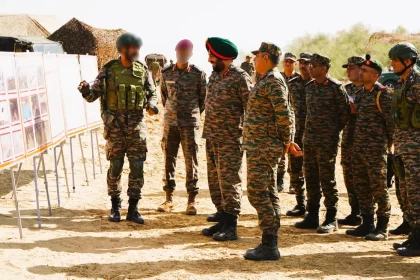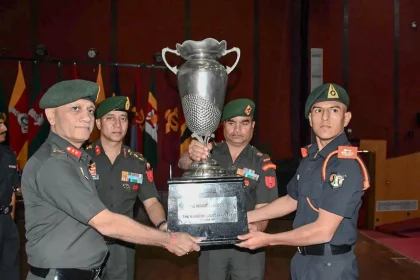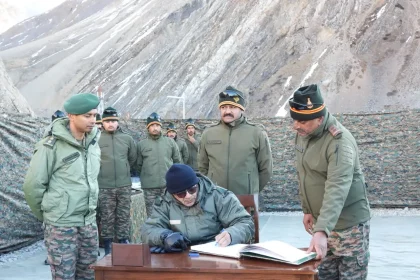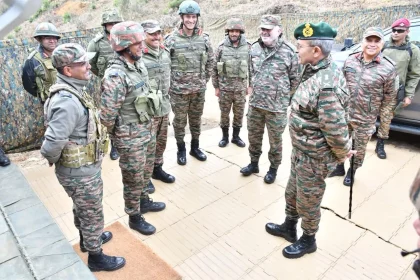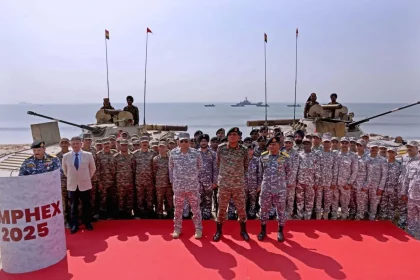Lt Gen Manjinder Singh Reviews Operational Preparedness of Bhairav Strike Force and Ranbankura Division
Sapta Shakti Army Commander commends high-tempo training, precision manoeuvres and future-ready capabilities.
Lt Arjun Singh Bhist Named Best Student as Young Officers’ Course Concludes at The Infantry School, Mhow
Officers from six Friendly Foreign Countries join Indian counterparts in completing intensive training on weapons, tactics and leadership.
Defence Secretary Rajesh Kr Singh and Lt Gen Raghu Srinivasan Review High-Altitude Infrastructure Push in Kumaon Sector
Defence Secretary Shri Rajesh Kr Singh, IAS, along with Lt Gen Raghu Srinivasan, Director General Border Roads, visited the Kumaon…
Lt Gen RC Tiwari Reviews Operational Preparedness Along Northern Borders
Eastern Army Commander praises Spear Corps for professionalism, joint readiness and technological excellence during forward area visit.
Air Marshal Nagesh Kapoor Addresses Joint Press Conference After Amphibious Phase of Tri-Service Exercise Trishul-25
Tri-Service Forces Demonstrate Joint Amphibious Capability Under ‘JAI’ Theme.
Indian Army Deploys Indigenous 16,000-ft Monorail System in Arunachal to Boost High-Altitude Logistics
New high-altitude logistics system boosts troop mobility in Arunachal’s remote Himalayan sectors.

